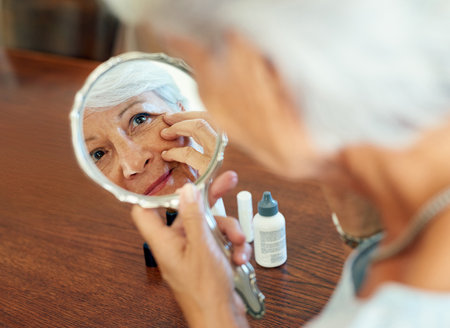1. Introduction: The Link Between Diet and Skin Health
When it comes to achieving that healthy, radiant glow, what you put on your skin matters — but what you put in your body matters even more. Your skin is your largest organ, and its directly affected by the nutrients you consume every day. In fact, a balanced diet packed with skin-friendly foods can help reduce inflammation, boost hydration, support collagen production, and protect against premature aging.
Many common skin concerns like dryness, acne, dullness, and early wrinkles are often linked to poor dietary choices. On the flip side, eating the right combination of vitamins, minerals, antioxidants, and healthy fats can make a big difference in how your skin looks and feels.
Why Your Diet Matters for Skin Health
Your skin needs certain key nutrients to function properly and stay vibrant. These include:
| Nutrient | Main Benefit for Skin | Examples of Food Sources |
|---|---|---|
| Vitamin C | Boosts collagen production and brightens complexion | Citrus fruits, strawberries, bell peppers |
| Vitamin E | Protects against sun damage and free radicals | Almonds, sunflower seeds, spinach |
| Omega-3 Fatty Acids | Reduces inflammation and keeps skin hydrated | Salmon, chia seeds, walnuts |
| Zinc | Aids in healing acne and other blemishes | Pumpkin seeds, lentils, chickpeas |
| Beta-Carotene (Vitamin A) | Evens out skin tone and supports cell turnover | Carrots, sweet potatoes, kale |
The Gut-Skin Connection
Your gut health plays a huge role in how your skin behaves. A diet high in processed foods and sugar can lead to imbalances in gut bacteria — which may trigger breakouts or flare-ups of conditions like eczema or rosacea. Meanwhile, fiber-rich whole foods help nourish good bacteria and keep your digestive system — and your skin — happy.
A Holistic Approach to Glowing Skin
If youre aiming for naturally glowing skin, think beyond topical creams or expensive treatments. Start with your plate! A colorful mix of whole foods not only fuels your body but also helps you glow from within. In the next section, we’ll dive into specific foods you should eat more of to support clear, youthful-looking skin.
2. Antioxidant-Rich Foods for a Youthful Glow
If youre dreaming of radiant, youthful skin, antioxidants are your new best friends. These powerful nutrients help fight off free radicals—unstable molecules that damage skin cells and accelerate aging. By adding antioxidant-rich foods to your daily meals, you can protect your skin from environmental stressors and keep it glowing from the inside out.
Why Antioxidants Matter for Your Skin
Every day, your skin is exposed to pollution, UV rays, and stress. These factors generate free radicals that can lead to premature wrinkles, dullness, and even dark spots. Antioxidants neutralize these harmful molecules before they cause damage, making them essential for maintaining healthy and youthful-looking skin.
Top Antioxidant-Rich Foods to Add to Your Diet
Here are some of the best foods packed with antioxidants that support glowing skin:
| Food | Main Antioxidants | Skin Benefits |
|---|---|---|
| Berries (blueberries, strawberries, raspberries) | Vitamin C, anthocyanins | Boost collagen production and reduce inflammation |
| Spinach & Kale | Lutein, beta-carotene | Protect against sun damage and improve skin elasticity |
| Nuts (especially almonds and walnuts) | Vitamin E | Help maintain skin moisture and reduce oxidative stress |
| Dark Chocolate (70% cocoa or higher) | Flavanols | Enhance blood flow to the skin and improve hydration |
| Green Tea | EGCG (Epigallocatechin gallate) | Soothe redness and prevent collagen breakdown |
Berries: Small but Mighty
Berries are more than just a sweet treat—theyre loaded with vitamin C, which is essential for collagen synthesis. Collagen keeps your skin firm and smooth. Plus, their deep colors come from anthocyanins, which have strong anti-inflammatory properties that help calm irritated skin.
The Leafy Green Advantage
Kale, spinach, and other dark leafy greens are rich in beta-carotene and lutein. These antioxidants not only protect your skin from UV damage but also promote cell turnover for a fresher complexion. They’re easy to add into smoothies, salads, or even sautéed as a side dish.
Nourish with Nuts & Seeds
Nuts like almonds provide a healthy dose of vitamin E—a fat-soluble antioxidant that helps lock in moisture and shield your skin from environmental damage. Walnuts also offer omega-3 fatty acids that reduce inflammation, giving your skin a more even tone.
Treat Yourself with Dark Chocolate
If you need another reason to enjoy chocolate, choose one thats at least 70% cocoa. The flavanols in dark chocolate increase circulation to the skin and help retain moisture levels—leaving your face looking plump and hydrated.
Sip on Skin-Loving Green Tea
This calming drink is packed with polyphenols like EGCG that help reduce redness and irritation while defending against signs of aging. A couple of cups a day can go a long way in supporting clear and resilient skin.
Add these vibrant foods into your daily routine to give your complexion the antioxidant support it needs. With consistent habits, you’ll be well on your way to healthier-looking skin that truly glows.
![]()
3. Healthy Fats: Nourishing Your Skin from Within
When it comes to achieving that natural, healthy glow, what you eat plays a big role — especially the kinds of fats you include in your diet. Healthy fats, particularly omega-3 fatty acids, are essential for maintaining skin hydration, elasticity, and overall radiance. These good fats help strengthen your skin’s barrier, lock in moisture, and reduce inflammation that can lead to redness or breakouts.
Why Omega-3s Matter for Your Skin
Omega-3 fatty acids are a type of polyunsaturated fat that support your skin from the inside out. They help keep the skin’s cell membranes strong and hydrated, which is crucial for preventing dryness and irritation. Omega-3s also help regulate oil production and may even protect against sun damage when combined with a healthy skincare routine.
Top Food Sources of Omega-3 Fatty Acids
| Food | Type of Omega-3 | Skin Benefits |
|---|---|---|
| Fatty fish (salmon, mackerel, sardines) | DHA & EPA | Reduces inflammation, boosts hydration, improves elasticity |
| Chia seeds | ALA | Supports skin barrier function and moisture retention |
| Flaxseeds (ground or oil) | ALA | Smooths skin texture and reduces roughness |
| Walnuts | ALA | Fights free radicals and calms irritated skin |
Other Skin-Loving Healthy Fats
In addition to omega-3s, other types of healthy fats like monounsaturated fats can also benefit your complexion. These fats help improve skin tone and keep it supple by promoting better nutrient absorption and reducing inflammation.
| Food Source | Main Type of Fat | How It Helps Your Skin |
|---|---|---|
| Avocados | Monounsaturated fats | Nourishes skin cells and supports collagen production |
| Olive oil (extra virgin) | Monounsaturated fats & antioxidants | Makes skin soft, smooth, and resilient to environmental damage |
| Almonds | Vitamin E & healthy fats | Protects against UV damage and supports healing |
| Coconut oil (in moderation) | Saturated fat (MCTs) | Can help reduce inflammation and improve moisture balance when used carefully in the diet |
Tips for Getting More Healthy Fats Daily:
- Add a spoonful of flaxseed to your smoothies or oatmeal.
- Swap processed snacks with a handful of walnuts or almonds.
- Use olive oil as a salad dressing base instead of creamy dressings.
- Enjoy grilled salmon or avocado toast as part of your weekly meals.
Your skin reflects what you feed it. By incorporating these healthy fat sources into your everyday meals, you’re giving your skin the tools it needs to stay hydrated, firm, and glowing.
4. Hydration and Foods That Lock in Moisture
When it comes to achieving that fresh, dewy glow, hydration is key. While drinking enough water is essential, your diet can also play a major role in keeping your skin plump and well-hydrated. In fact, many fruits and vegetables are packed with water, vitamins, and antioxidants that help your skin retain moisture and look radiant.
Why Water-Rich Foods Matter
Your skin is made up of about 64% water, so it makes sense that staying hydrated from the inside out helps maintain its elasticity and smoothness. Consuming foods with high water content not only supports overall hydration but also delivers nutrients directly to skin cells. This means fewer dry patches, less flakiness, and a more youthful appearance.
Top Water-Rich Foods for Healthy Skin
Here are some hydrating foods you can easily add to your daily meals to boost your skin’s moisture levels:
| Food | Water Content (%) | Skin Benefits |
|---|---|---|
| Cucumber | 96% | High in silica; helps improve skin elasticity |
| Watermelon | 92% | Packed with lycopene; helps fight UV damage |
| Strawberries | 91% | Rich in vitamin C; boosts collagen production |
| Lettuce (Romaine) | 95% | Contains folate and vitamin A; supports cell turnover |
| Zucchini | 94% | Loaded with antioxidants; helps soothe inflammation |
Healthy Fats That Seal in Moisture
Apart from water-rich foods, healthy fats are crucial for locking in moisture. Omega-3 fatty acids found in foods like avocados, walnuts, and salmon help strengthen the skin barrier, preventing water loss and keeping skin soft and supple.
Easy Ways to Add Hydrating Foods to Your Diet
- Add cucumber slices to your salads or smoothies.
- Snack on watermelon during hot afternoons.
- Toss strawberries into your morning oatmeal or yogurt.
- Use romaine lettuce as a base for wraps or bowls.
- Sauté zucchini with olive oil for a quick side dish.
- Add avocado to toast or blend into a smoothie for healthy fats.
The Bottom Line on Hydration and Skin Health
Your skin needs more than just topical products—it thrives on what you feed your body. By including water-rich fruits and veggies along with healthy fats in your diet, you’re giving your skin the tools it needs to stay moisturized, plump, and glowing all day long.
5. Collagen-Boosting Foods for Firm and Smooth Skin
Collagen is the protein that keeps our skin firm, smooth, and youthful-looking. As we age, our natural collagen production slows down, leading to fine lines, sagging, and a loss of elasticity. The good news? Certain foods can help support your body’s collagen production, giving your skin the tools it needs to stay strong and radiant.
Why Collagen Matters for Your Skin
Collagen works like the scaffolding of your skin — it holds everything up and keeps it tight. When collagen levels dip, skin starts to lose its bounce and firmness. By incorporating collagen-boosting foods into your diet, you can help reduce signs of aging from the inside out.
Top Nutrients That Help Boost Collagen
To naturally support collagen production, focus on foods rich in these key nutrients:
| Nutrient | How It Helps | Best Food Sources |
|---|---|---|
| Vitamin C | Essential for collagen synthesis | Citrus fruits, strawberries, bell peppers, broccoli |
| Zinc | Supports cell repair and collagen formation | Pumpkin seeds, chickpeas, beef, cashews |
| Copper | Aids in stabilizing collagen structures | Shellfish, nuts, seeds, dark chocolate |
| Amino Acids (Proline & Glycine) | Main building blocks of collagen | Bone broth, chicken skin, egg whites, gelatin |
| Antioxidants | Protect existing collagen from free radical damage | Berries, green tea, spinach, dark chocolate |
Foods That Naturally Support Collagen Production
You don’t need fancy supplements — just add more of these whole foods into your daily meals:
1. Bone Broth
This nutrient-rich broth is packed with collagen and amino acids that directly support skin structure. Sipping on bone broth a few times a week can be an easy and comforting way to boost your intake.
2. Citrus Fruits
Lemons, oranges, grapefruits — all are rich in vitamin C which is vital for producing new collagen in the body.
3. Leafy Greens
Kale, spinach, and Swiss chard contain chlorophyll and antioxidants that not only protect skin but also assist in rebuilding collagen fibers.
4. Eggs & Egg Whites
Egg whites are a great source of proline — one of the key amino acids needed for collagen production.
5. Berries
Blueberries and strawberries are rich in antioxidants that help protect your skin’s existing collagen from environmental damage.
A Simple Tip to Maximize Results
Pairing vitamin C-rich foods with sources of protein helps maximize your body’s ability to synthesize new collagen. For example: try a spinach salad with grilled chicken and a citrus vinaigrette for a delicious skin-supporting meal.
Your Skin Will Thank You!
By adding more collagen-boosting foods to your diet consistently over time, you’ll notice improvements in skin texture, firmness, and overall glow — no needles or filters required!
6. Avoid These Foods: What to Cut from Your Diet for Clear Skin
When it comes to achieving healthy, glowing skin, what you don’t eat can be just as important as what you do. Certain foods are known to trigger breakouts, increase inflammation, and disrupt your skin’s natural balance. By cutting back on these dietary culprits, you can support a clearer complexion from the inside out.
Processed Sugars and Refined Carbs
High-sugar foods like candy, pastries, soda, and white bread cause your blood sugar to spike rapidly. This triggers an increase in insulin, which may lead to excess oil production and clogged pores—two major contributors to acne. Refined carbs also lack nutrients that your skin needs to repair and renew itself.
Common High-Sugar Offenders:
| Food Item | Why It’s Harmful for Skin |
|---|---|
| Soda & Sweetened Drinks | High in sugar; increases inflammation and glycation |
| Candy & Chocolate Bars | Spike insulin levels; linked to breakouts |
| White Bread & Pasta | Refined carbs with high glycemic index; cause oil overproduction |
| Baked Goods (cookies, cakes) | Loaded with sugar and processed fats; clogs pores |
Dairy Products
Dairy is another common trigger for skin issues, especially acne. Milk contains hormones that may stimulate oil glands and contribute to clogged pores. Some people find that reducing or eliminating dairy leads to noticeably clearer skin within weeks.
Dairy Products to Watch Out For:
| Product | Possible Effects on Skin |
|---|---|
| Cow’s Milk (whole, low-fat, skim) | Might contain growth hormones; increases sebum production |
| Cheese (cheddar, mozzarella) | High in saturated fat; linked to inflammation |
| Ice Cream | Sugar + dairy combo; double trouble for skin health |
| Yogurt (flavored/fruit-added) | Often high in added sugars and artificial flavorings |
Fast Food and Greasy Snacks
Burgers, fries, chips, and other greasy fast foods are often made with inflammatory oils and loaded with sodium. These ingredients can dehydrate your skin and trigger flare-ups by disrupting your body’s natural balance.
Tip:
If youre craving something crunchy or salty, opt for air-popped popcorn or roasted chickpeas instead of potato chips.
Artificial Additives and Preservatives
Additives like artificial colors, flavors, and preservatives may irritate sensitive skin and contribute to inflammation. While more research is needed, many dermatologists suggest minimizing processed foods for better overall skin health.
Quick Rule of Thumb:
If a food has a long ingredient list full of words you can’t pronounce, its probably not doing your skin any favors.
By becoming mindful of what foods might be aggravating your complexion—and swapping them out for whole, nourishing alternatives—you’ll take one more step toward maintaining clear and radiant skin every day.


